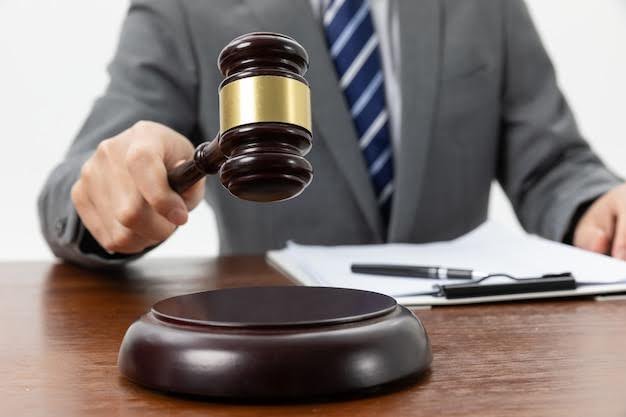
Understanding how to legally recover owed money is crucial for businesses and individuals in Singaporean banking law. A garnishee order is a powerful tool in this process, serving as a legal directive issued by a court to recover debts.
Imagine a scenario where a company finally retrieves a significant overdue payment from a debtor’s bank account through this legal instrument—highlighting the garnishee order’s role as a key enforcer in debt recovery.
This article aims to explain what a garnishee order is, how it functions within banking law, and the situations where it becomes necessary.
What Is A Garnishee Order In Banking Law?
A garnishee order is a judicial order granted by a court allowing a creditor to recover debts directly from a third party that holds money on the debtor’s behalf—usually a bank or financial institution which is referred to as ‘judgement debtor’. This order is issued when a debtor fails to comply with a payment required by a court judgement.
Upon receiving the order, the bank must set aside funds from the debtor’s account to be paid directly to the creditor, effectively bypassing the debtor in the payment process. This mechanism ensures creditors can recover their debts even when direct collection efforts fail.

When Will You Need A Garnishee Order?
Garnishee orders become necessary in several specific situations where direct debt recovery proves challenging or impossible:
- Recovery of Unpaid Debts: This is the most common scenario for applying garnishee orders. When debtors refuse or cannot make payments voluntarily, creditors can obtain a garnishee order to seize the debts directly from the debtor’s bank accounts, ensuring recovery of the owed sums.
- Enforcement of Legal Judgments: Often, after a court judgement requires a debtor to pay a sum of money, the debtor might delay or avoid payment. In such cases, a garnishee order can enforce the judgement by allowing the creditor to collect the adjudicated amount directly from the debtor’s financial accounts.
- Company Liquidations: During the liquidation process, creditors may face challenges in recovering owed payments because the company may no longer be operational or lack liquid assets. Garnishee orders can be used to claim payments from third parties who owe money to the insolvent company, ensuring that creditors receive their due shares of any available funds.
How To Get A Garnishee Order Against A Bank
Securing a garnishee order against a bank requires understanding and following a specific legal procedure, which ensures that creditors can legally access a debtor’s bank account to recover owed funds.
This process is delineated under Order 49, Rule 2 of the Singapore Rules of Court, guiding the issuance of garnishee orders.

Understanding Garnishee Proceedings
Garnishee proceedings begin with obtaining a judgement or order that confirms the debtor owes money to the creditor. Once this is established, the creditor can initiate garnishee proceedings to secure payment from third parties, such as banks, that hold money for the debtor.
Procedure To Obtain A Garnishee Order
- Identification and Verification: The creditor must identify the bank holding the debtor’s funds and verify sufficient funds in the account to cover the debt.
- Application for Garnishee Order: The creditor must apply for a garnishee order nisi, a provisional order instructing the bank to freeze the debtor’s account pending further court order.
- Service of Order: The order nisi must be served on the bank, which is then obligated to freeze the debtor’s account up to the amount specified.
Order 49, Rule 2
According to Order 49 of the rules of court, the specific legal framework and requirements for issuing a garnishee order. It provides the procedural steps a creditor must follow, including the application, service, and subsequent confirmation of the garnishee order.
Affidavit Requirement
The affidavit filed alongside the application must include:
- The name and last known address of the debtor.
- The details of the judgement or order under which the debt arises, including the amount due.
- The name and address of the bank believed to hold the debtor’s funds.
- A statement confirms that the garnishee order is not being used for other legal proceedings.
Filing The Documents And Fees
- The application and affidavit must be filed at the court office where the judgement was obtained.
- There are filing fees associated with the application, which vary depending on the amount of the claim and the specific Court’s schedule of fees. It is advisable to check the latest fee schedule on the Singapore Courts’ official website or at the court registry.

The Role Of A Lawyer In Obtaining A Garnishee Order
In securing a garnishee order, a lawyer plays an instrumental role in ensuring that all legal requirements are met and the proceedings are handled efficiently. Here’s how a lawyer assists:
- Legal Advice: A lawyer provides crucial advice on the viability of obtaining a garnishee order based on the case’s specifics, including the likelihood of success given the debtor’s financial circumstances and the location of their assets.
- Document Preparation: A lawyer helps draft the necessary legal documents, including the application for the garnishee order and the supporting affidavit. These documents must be meticulously prepared to meet legal standards and include all required details to avoid procedural delays.
- Filing and Representation: Lawyers manage the filing of documents and represent the creditor in Court. They handle presenting the case to the Court, arguing why a garnishee order should be issued against the debtor’s bank account.
- Negotiation and Communication: Lawyers may also negotiate with the debtor or the garnishee (the bank) on behalf of the creditor, attempting to reach a settlement that avoids further legal action, which can be beneficial in reducing time and costs for all parties involved.
- Ensuring Compliance: Throughout the garnishee proceedings, lawyers ensure that all actions taken comply with local laws and court rules, safeguarding their clients’ rights and maintaining the process’s integrity.
When Is The Garnishee Discharged From Liability?
A garnishee (typically a bank in the context of banking law) is discharged from liability once they have complied with the garnishee order issued by the Court. The specifics of when this discharge occurs include:
- Payment of Funds: The garnishee is discharged from liability when they pay the amount specified in the garnishee order to the Court or directly to the creditor, as directed. This payment satisfies the garnishee’s obligation under the order.
- Order of Discharge: In cases where the garnishee cannot comply with the order due to insufficient funds in the debtor’s account or for other valid reasons, they may seek an order of discharge from the Court. If the Court grants this order, the garnishee is relieved from further obligations under the garnishee order.
- Completion of Proceedings: If the garnishee proceedings are completed and the Court decides that no funds will be paid by the garnishee (for example, if the debtor successfully challenges the creditor’s claim), the garnishee is also discharged from liability.
Conclusion On Garnishee Order
Now that we’ve discussed garnishee orders within Singaporean banking law, detailing the processes involved in obtaining such orders, the roles of the involved parties, and the legal stipulations guiding these proceedings.
Understanding garnishee orders is essential for creditors seeking to recover debts effectively and for debtors who must know their rights and obligations under the law.
For tailored legal advice and expert handling of garnishee procedures, contacting a professional like The Singapore Lawyer can make the process smoother and protect your legal and financial interests. Message us today for a free consultation.
Frequently Asked Questions About Garnishee Order
What Is A Garnishee Order?
A garnishee order is a legal directive issued by a court allowing a creditor to collect a debt from a third party, typically a bank, which holds money on the debtor’s behalf.
How Do I Apply For A Garnishee Order In Singapore?
To apply for a garnishee order, you must first obtain a court judgement against the debtor, file an application with the Court, including a detailed affidavit, and then serve the order on the garnishee (the bank) once it is issued.
Can The Debtor Contest A Garnishee Order?
A debtor can contest a garnishee order by challenging the original judgement or demonstrating that the funds in question are exempt from garnishment under Singaporean law.
What Role Does A Lawyer Play In The Garnishee Process?
A lawyer can provide legal advice, draft and file necessary documents, represent you in Court and ensure all legal standards are met throughout the garnishee process.
When Is A Bank Discharged From Its Obligations Under A Garnishee Order?
A bank is discharged from its obligations once it has complied with the garnishee order by paying the specified amount to the creditor or the Court or if a court grants a discharge due to other valid reasons.
